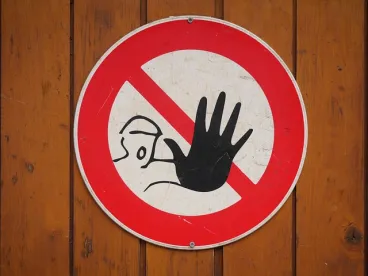The U.S. Department of Labor (DOL) has issued regulatory guidance making it clear that the WARN Act (Worker Adjustment and Retraining Notification) will be applied even during the COVID-19 pandemic. In response to numerous questions, DOL issued these FAQs, confirming that there will be no special treatment for COVID-19 layoffs or closings.
As a general rule, WARN requires employers with 100 or more employees to give 60 days advance notice when closing a plant or engaging in a mass layoff lasting more than six months. Advance notice can also be required if 50 or more employees in an entire department are laid off.
Salaried employees are entitled to notice and count towards these thresholds. Temporary employees are not entitled to notice, but are counted toward the thresholds. Part-time employees and employees with less than six months of employment are not counted toward the thresholds, but are entitled to notice. There are complicated rules for counting employees, counting the employees affected by a layoff, and when notice must be given if there are multiple layoffs. Pierce Atwood employment attorneys are available to assist those facing these types of issues.
In the FAQs, the DOL states that the standard provisions of the WARN Act would apply during the COVID-19 epidemic, including the provisions that call for less than 60 days of notice in certain circumstances. There are two relevant exceptions: (1) the faltering business exception and (2) the unforeseeable business circumstances exception. However, the burden of proof is on the employer to demonstrate it meets one of these exceptions.
The faltering business exception is available if the employer can demonstrate that a loan, transaction, or other financing would be jeopardized if it were to give a WARN notice.
An unforeseeable business circumstance is defined as “sudden, dramatic, and unexpected action or condition outside the employer’s control.” Examples include:
-
Sudden and unexpected loss of a major contract
-
An unanticipated major economic downturn
-
A governmental ordered closing of a business
The DOL has also made clear that it will not provide individual guidance on whether a WARN notice is required. Rather, it stated that decisions would be made on a case-by-case basis and would be decided by private right of action. The Department has encouraged “employees concerned about a WARN Act violation to seek legal counsel.”
Most agree that the initial closings, furloughs, and layoffs in response to COVID-19 and various governmental orders would qualify for one or more of the exceptions. However, at some point, it may become apparent that the job loss will become permanent. When that occurs, if the thresholds are met, a WARN notice must be given. Employers are required to give as much notice as practical even if they can show one of the exceptions. It may also become apparent, based on a declining economic conditions, that a future layoff or closing will be necessary.
Failure to give timely WARN notice can result in significant exposure to the employer. An employer is required provide each employee with full pay and benefits for every day that WARN notice was not provided.
Maine’s Severance Pay law must also be considered. It requires 90 days’ notice of a similar large plant closing. In the event of a mass layoff, as much notice as practical with a minimum of seven days of notice must be given. The Maine law also requires severance payments in the event of a plant closing or mass layoff. Like WARN, this statute is complicated, and unless it is completely clear that the statute does not apply, employers contemplating a mass layoff should consult counsel before determining their course of action.
If it appears that furloughs or layoffs might be extended beyond six months, employers should examine carefully their employee counts and review COVID-19 and any pre-COVID-19 reductions in order to determine whether the reductions separately or when aggregated would trigger an obligation to provide a WARN Act notice and whether the Maine Severance Pay law will apply.


 />i
/>i
